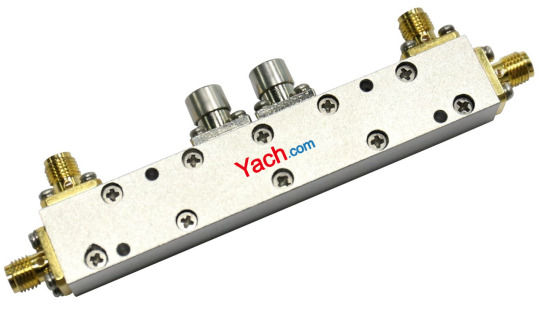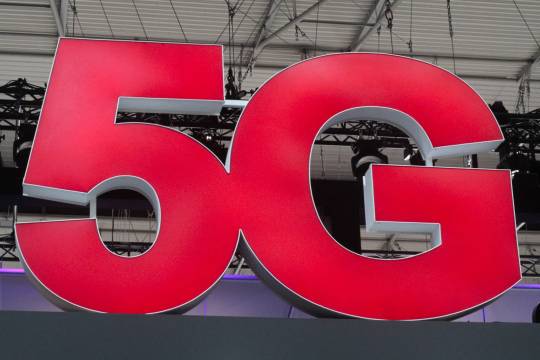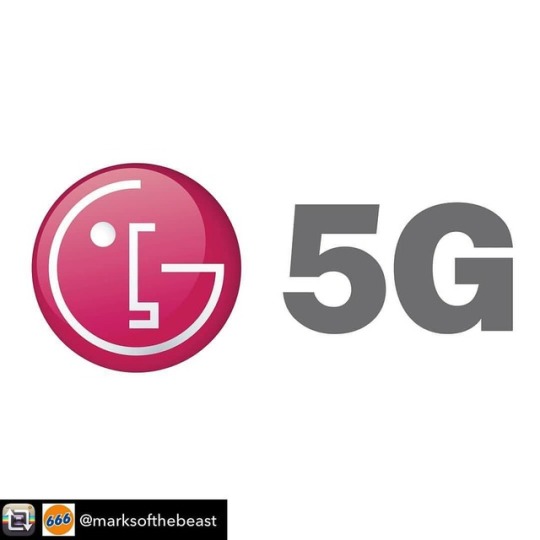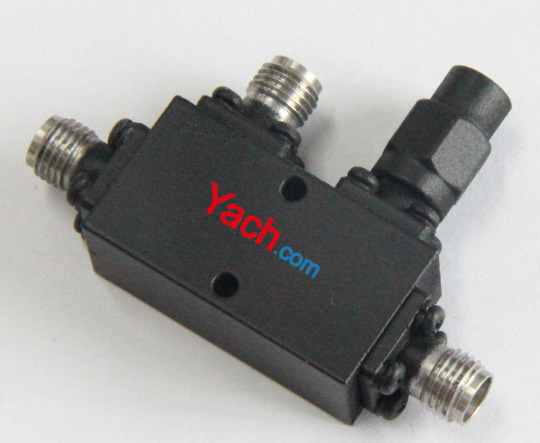#millimeterwave
Explore tagged Tumblr posts
Text
Antenna in Package AiP Market Opportunities Rising with Expansion of Millimeter Wave Technology Globally
The Antenna in Package (AiP) market is gaining significant traction as wireless communication technologies become increasingly integrated into compact, high-performance electronic devices. AiP technology incorporates antennas directly into semiconductor packages, enabling advanced radio frequency (RF) performance while saving space. This innovation is particularly relevant in 5G, millimeter-wave (mmWave), automotive radar, satellite communications, and IoT applications.

Market Drivers
One of the primary drivers of the AiP market is the global rollout of 5G technology, which operates at higher frequencies such as mmWave. These frequencies require advanced antenna solutions capable of handling high data rates and low latency. Traditional printed circuit board (PCB) antennas often fall short in terms of integration and performance. AiP offers a more efficient alternative by reducing interconnect losses and supporting beamforming technologies critical for 5G.
Another major factor is the increasing miniaturization of consumer electronics. Smartphones, wearables, and IoT devices demand compact components that deliver excellent performance. AiP technology meets this requirement by integrating the antenna and RF front-end into a single compact module, freeing up space and improving system-level efficiency.
Technological Advancements
Recent advancements in substrate materials, system-in-package (SiP) technologies, and 3D packaging are making AiP solutions more cost-effective and scalable. Low-temperature co-fired ceramic (LTCC) and organic substrates have enabled better thermal and electrical performance. Integration of multiple functions such as filters, power amplifiers, and transceivers within the package has allowed manufacturers to create multi-functional modules tailored for specific end-uses.
In addition, the evolution of advanced simulation tools and design automation has shortened development cycles and reduced costs, making AiP more accessible to a broader range of industries. These advancements have facilitated faster prototyping and more reliable testing environments.
Key Market Segments
The AiP market can be segmented based on frequency band, end-user application, and geography.
By frequency, the market includes sub-6 GHz and mmWave segments, with mmWave seeing higher growth due to its necessity in 5G and automotive radar applications.
By application, the market is divided into consumer electronics, automotive, telecommunications, aerospace and defense, and industrial IoT.
Geographically, North America and Asia-Pacific dominate the AiP landscape, thanks to the presence of major semiconductor companies and 5G infrastructure deployment.
Regional Insights
Asia-Pacific leads the AiP market due to robust electronics manufacturing ecosystems in countries like China, South Korea, Taiwan, and Japan. Government initiatives to boost 5G and smart city projects further support AiP growth in the region. North America, especially the United States, sees significant demand from telecom providers, defense contractors, and autonomous vehicle manufacturers. Europe is also emerging as a key region, driven by automotive and industrial automation applications.
Competitive Landscape
The AiP market is highly competitive, with key players including Qualcomm, ASE Group, Amkor Technology, Murata Manufacturing, TSMC, and MediaTek. These companies are investing in research and development to improve integration, reduce power consumption, and enhance RF performance. Collaborations, joint ventures, and strategic acquisitions are common strategies to gain market share and accelerate product development.
Startups and mid-sized players are also entering the space with niche AiP solutions for IoT and wearable devices, contributing to market dynamism and innovation.
Challenges and Opportunities
Despite its promise, AiP adoption faces several challenges. High design complexity, thermal management issues, and initial manufacturing costs are significant barriers. Additionally, maintaining signal integrity in densely packed modules remains a technical hurdle.
However, opportunities abound. As mmWave adoption expands and edge computing grows in importance, AiP is poised to play a pivotal role in enabling low-latency, high-speed communication across various devices and systems. The trend toward smart cities, connected vehicles, and AR/VR applications also offers long-term growth potential.
Future Outlook
The AiP market is expected to grow at a CAGR exceeding 15% over the next five years, driven by surging demand across multiple industries. Technological advancements, cost optimization, and expanding 5G infrastructure will be key enablers. As device manufacturers strive to balance performance, size, and power efficiency, AiP is likely to become a standard in RF design and packaging.
#AntennaInPackage#AiPMarket#5GTechnology#MillimeterWave#WirelessCommunication#IoTDevices#RFTechnology
0 notes
Text
Radar Sensors Are Taking Over! Market Set to Hit $74.3B by 2034!
Radar Sensor Market is transforming industries with precise detection and measurement solutions, driving autonomous vehicles, industrial automation, and aerospace advancements. As demand for enhanced safety, efficiency, and automation surges, radar sensor innovations are shaping the future of smart technology.
To Request Sample Report : https://www.globalinsightservices.com/request-sample/?id=GIS33023 &utm_source=SnehaPatil&utm_medium=Article
📈 Market Insights & Growth Trends
✅ Automotive radar sensors lead with applications in adaptive cruise control and collision avoidance, driven by autonomous vehicle adoption. ✅ Industrial automation ranks second (30%), fueled by Industry 4.0 and smart manufacturing. ✅ Consumer electronics (15%) and aerospace & defense (10%) contribute to sector diversity. ✅ North America dominates, backed by autonomous vehicle R&D and strong investments. ✅ Europe follows, with regulatory support boosting automotive radar applications. ✅ Asia-Pacific is a rising powerhouse, with rapid urbanization and smart city adoption.
🏆 Market Segmentation
🔹 Type: Imaging Radar, Non-Imaging Radar, CW Radar, Pulsed Radar 🔹 Technology: FMCW, Ultra-Wideband, Millimeter Wave 🔹 Application: Automotive, Aerospace & Defense, Industrial, Security, Traffic Management 🔹 Key Players: Robert Bosch GmbH, Continental AG, Infineon Technologies AG
🚀 Future Outlook
The radar sensor market is set for exponential growth with IoT, 5G integration, and smart infrastructure innovations. Challenges like high costs and regulatory compliance persist, but breakthroughs in AI-driven radar systems and advanced sensor capabilities will unlock new market potential.
#radarsensors #autonomousvehicles #smarttechnology #radardetection #industrialautomation #aerospacetech #automotiveradar #collisionavoidance #selfdrivingcars #millimeterwave #fmcwradar #smartmanufacturing #trafficmanagement #surveillance #aiintech #5gconnectivity #iotdevices #nextgentech #radarsolutions #radarapplications #securitysolutions #objectdetection #radartech #advancedanalytics #vehicletechnology #defensetech #radarforautonomy #automotivesafety #radarintegration #futuretech #sensorsolutions #smartcities #innovationintech #radarfuture #industry40
Research Scope:
· Estimates and forecast the overall market size for the total market, across type, application, and region
· Detailed information and key takeaways on qualitative and quantitative trends, dynamics, business framework, competitive landscape, and company profiling
· Identify factors influencing market growth and challenges, opportunities, drivers, and restraints
· Identify factors that could limit company participation in identified international markets to help properly calibrate market share expectations and growth rates
· Trace and evaluate key development strategies like acquisitions, product launches, mergers, collaborations, business expansions, agreements, partnerships, and R&D activities
About Us:
Global Insight Services (GIS) is a leading multi-industry market research firm headquartered in Delaware, US. We are committed to providing our clients with highest quality data, analysis, and tools to meet all their market research needs. With GIS, you can be assured of the quality of the deliverables, robust & transparent research methodology, and superior service.
Contact Us:
Global Insight Services LLC 16192, Coastal Highway, Lewes DE 19958 E-mail: [email protected] Phone: +1–833–761–1700 Website: https://www.globalinsightservices.com/
0 notes
Text
Millimeter Wave Radar Market is EXPLODING! From $1.9B to $7.6B by 2034! 📡🔥
Millimeter wave (mmWave) radar market is expanding rapidly, driven by the increasing adoption of advanced sensing technologies across various industries. This technology, which operates in the 30 GHz to 300 GHz frequency range, offers high precision, superior resolution, and enhanced object detection capabilities, making it essential for applications in automotive, aerospace, defense, telecommunications, and healthcare.
To Request Sample Report : https://www.globalinsightservices.com/request-sample/?id=GIS22015 &utm_source=SnehaPatil&utm_medium=Article
A significant driver of market growth is the rising demand for autonomous vehicles and advanced driver-assistance systems (ADAS). mmWave radar enhances vehicle safety by providing real-time object detection, collision avoidance, and adaptive cruise control. Additionally, the expansion of 5G networks is fueling demand for mmWave technology in high-speed data transmission and connectivity solutions.
The defense and security sectors are also leveraging millimeter wave radar for surveillance, target detection, and threat monitoring. Meanwhile, industries like healthcare are integrating this technology into non-contact vital sign monitoring systems, improving remote patient care.
North America leads the market due to strong investments in automotive automation, 5G infrastructure, and military applications. However, Asia-Pacific is emerging as a key growth region, with increasing adoption in smart transportation, consumer electronics, and telecommunications.
Despite its advantages, challenges such as high production costs, signal interference, and regulatory complexities remain. However, ongoing R&D and miniaturization efforts are expected to drive down costs and enhance adoption.
With advancements in autonomous systems, smart cities, and next-gen communication networks, the millimeter wave radar market is poised for substantial growth in the coming years.
#millimeterwaveradar #mmwaveradar #radartechnology #autonomousvehicles #adas #5gtechnology #smartcities #automotiveinnovation #radarsensors #futureoftransportation #collisionavoidance #radarengineering #wirelesscommunications #defensetechnology #militaryradar #aerospaceengineering #nextgenradar #mmwavesensors #iotconnectivity #radarsolutions #highfrequencytech #radardetection #remotehealthcare #securitysurveillance #droneintegration #wirelesstechnology #radarapplications #autonomousdriving #futuremobility #radarresearch #millimeterwave #smartmobility #radarinfrastructure #precisionradar #radarnetworks #aiinsensing #vehicleradar #mmwave5g #industrialautomation #surveillanceinnovation #radarsystems
0 notes
Link

0 notes
Photo

Yach Dual Directional Couplers, YACH53000 series, DC-40GHz, 500W, SMA Yach's Dual Directional Couplers operate from DC to 110GHz with Broadband, High Power, High Isolation, Low VSWR, Low Insertion Loss, More Connector Optional, Accept Custom. Features: broadband, high power, high isolation, low loss, low VSWR, long life cycles, quick lead time, parts of items are in stock, custom is available. more info, please refer to http://www.yach.com for request, please leave me message or send to [email protected] or call +86 13127520272 #5g #rf #microwave #millimeterwave #terahertz #poweramplifiers #lownoiseamplifiers #matrixswitches #pindiodeswitches #solidstateswitches #coaxialmechanicalswitches #waveguideswitches #absorbers #reflectors #adapters #antennas #attenuators #biastees #cablesassembly #couplers #dcblocks #detectors #phaseshifters #powerdividers #combiners #filters #euqalizers #mixers #frequencydividers #terminations #rotaryjoints #isolators #limiters #probers #spreadspectrumdevices #opticcommunications #anechonicchamber #nearfieldmeasurement #farfieldmeasurement #reverberationchamber #radartargetsimulators #ferrite #turnkeyprojects #keycom #spinner #flann #narda #minicircuits #radiall #keysight #rohdeschwarz #frankonia #mvg #nsimi
2 notes
·
View notes
Text
How 5G makes use of millimeter waves
How 5G makes use of millimeter waves


It took a while, but the first ever 5G spec was finally approved late last year. 5G NR, as it’s called, will bring about super fast mobile internet by tapping into new spectrum. We’re expecting to see the first 5G-ready phones in the first half of 2019, although most people likely won’t experience the full benefits of the new technology until about a year later. Still, 5G NR promises to…
View On WordPress
#5g#at&t#gadgetry#gadgets#gear#millimeterwave#mmWave#mobile#networking#qualcomm#sprint#t-mobile#tomorrow#verizon
0 notes
Photo

5G posts we’re pretty silent up until now. Research the hashtags ⬇️ below. Repost from @marksofthebeast using @RepostRegramApp - Plans to transition to #5G around the world is already underway. Soon every city will be retrofitted with this technology. Mini cell stations will be placed all throughout our neighborhoods and cities. They will be installed on the sides or tops of buildings and on street light poles. A 5G #celltower is more dangerous than other #celltowers for two main reasons: First, 5G is ultra high frequency and ultra high intensity. 3G & 4G use between a 1 - 4 gigahertz frequency. 5G uses between a 24 - 90 gigahertz frequency. To put this in perspective, 90 gigahertz is 90 billion electromagnetic waves hitting the cells in your body per second. This is a whole lot more #radiation than we are exposed to naturally. Second, because of the shorter length of #millimeterwaves (MMV) required by 5G to support the bandwidth, these shorter waves do not travel as far nor through objects. This means with our current number of cell towers the cell signal will not be reliable. To compensate many more mini cell towers must be installed. It is estimated that they will need a mini cell station every 2 - 8 houses. Health experts believe this increased exposure to 5G will have a devastating impact on our health. #GWENTOWERS #SMALLCELL #GWENTOWER #HIDDENAGENDA #AGENDA21 #AGENDA2030 #SMARTGRID #ARTIFICIALINTELLIGENCE #BRAINDAMAGE #HAARP #GEOENGINEERING #MICROWAVERADIATION #CHEMTRAILS #NANOBOTS #RFID #MINDCONTROL #PROPAGANDA #CONSPIRACY #CONSPIRACYTHEORY #ARCHON #DIRECTENERGYWEAPONS #SILENTWEAPONSFORQUIETWARS #NEWWORLDORDER #WAKEUP #BRANDALISM https://www.instagram.com/p/BslAB52Flgy/?utm_source=ig_tumblr_share&igshid=1wajnmzderydy
#5g#celltower#celltowers#radiation#millimeterwaves#gwentowers#smallcell#gwentower#hiddenagenda#agenda21#agenda2030#smartgrid#artificialintelligence#braindamage#haarp#geoengineering#microwaveradiation#chemtrails#nanobots#rfid#mindcontrol#propaganda#conspiracy#conspiracytheory#archon#directenergyweapons#silentweaponsforquietwars#newworldorder#wakeup#brandalism
0 notes
Link
Keysight Technologies, Inc. (NYSE: KEYS), a leading technology company that delivers advanced design and validation solutions to help accelerate innovation to connect and secure the world, announced the Keysight N9042B UXA X-Series signal analyzer solution, which enables customers to test the performance of millimeter-wave (mmWave) innovations in 5G, aerospace & defense and satellite communications.
At mmWave frequencies, signals are more susceptible to impairments that affect the signal quality, such as IQ modulation errors, phase noise, distortion, signal-to-noise ratio, amplitude, and phase linearity. Keysight’s new N9042B UXA X-Series signal analyzer provides wide analysis bandwidth and deep dynamic range to help customers solve their most difficult mmWave challenges including tight design margins and timelines, complex modulation and stringent standards.
1 note
·
View note
Text
Who is 5G millimeterwave for?
I’m not a 5G fear nut. 5G isn’t going to hurt anyone, it’s just radio, please god stop saying that 5G will dissolve your bones and bring dishonour on your cow. It’ll only do that if you stand directly in front of the antenna horn, but that’ll also happen with like, FM radio, and very large foghorns.
With that out of the way, a question I’ve discussed with a few friends over the past couple days is: Who is 5G for?
Specifically millimeter wave here. 5G has two bands that haven’t been used for cell networks before, a ~2-5GHz band and a ~24-70GHz band, I don’t recall the exact ranges but those are about right. 5G also has the low-band, which is the normal 900-2000MHz band.
The 2-5GHz band is pretty sensible. sub 10-GHz RF is pretty good at passing through a wide variety of materials, there’s a reason 5GHz wifi is popular, you don’t need ~that~ many more base stations to get it to everyone in your building, and you can put many more users on your network with the increased bandwidth. 5GHz can still pass through walls, humans and cover reasonable distances even without direct line-of-sight, so I really have nothing in particular against mid-band 5G, assuming you consider bringing ~200Mbps internet to mobile devices is a good call. I have strong opinions about that but that’s not the point of this post. If nothing else it at least increases the total network capacity which is a good thing.
Then there’s high-frequency 5G, the 24-70GHz stuff. In that band you have extremely limited range that requires you to pepper the environment with femtocells, each of which needs to be fiber-linked to a high speed backbone because each one offers gigabit connections. These frequencies are so high they can be blocked by your hand if you hold the device wrong, and they pretty much only propagate in straight lines. Now
a) I don’t think anyone needs gigabit on a mobile terminal, grow up, we’re being serious here.
b) What’s the benefit of high speed, low-latency networking on the go if it only works when you have direct line of sight to your femtocell?
I hear a lot of The Tech People talking about how 5G will enable self-driving cars and remote surgery to which I ask: wait what? You think this signal that could be lost, without warning, if I turn a corner, is suitable for self-driving cars? And remote surgery, which would require a femtocell In The Same Room As The Robots, with a full fibre backhaul? Why not just wire the robots in directly?
For something like remote medicine, it’d make more sense to use a local 24-70GHz networking standard like 802.11aj/ay, it even has a fancy name: WiGig. Intel makes cards that can do this TODAY, they sell them for wireless VR stuff, it’s really cool. 60GHz multi-gigabit video streaming in high resolution and frame-rate within a room.
Like, 24-70GHz radio isn't useless, it’s just terrible for a mobile terminal. You should either use it to resurrect the old PAN idea of networking all the devices in your room together locally at high speed, or use it as we already do, for point-to-point microwave connections that need to be fast between fixed dishes.
Having discussed this with some friends, I think there’s a couple good ideas, ranging from fairly conventional to a little tin-foil-hat-but-not-entirely-unbelievable.
1) The conventional idea is that it’s all buzzwords and marketing. Most companies won’t invest in installing millimeter wave outside of a handful of special locations, they’ll stick to the lower bands and call it 5G, and most people won’t notice, because no-one needs gigabit networking to their phone. Self driving cars will never become real, or at least if they do it won’t be on the back of 5G. Remote surgery will continue to use high speed fibre internet. We probably stop getting faster mobile internet because honestly, no one needs it.
2) A little less believable is that these large companies ARE banking on self-driving cars and massively distributed high bandwidth IoT stuff. They intend to sell their 5G services to dense city sensor networks and Tesla and to embed enough millimeter wave in major cities to enable the usage of these high end technologies. Whether it works inside doesn’t matter, that’s not where the self-driving-cars and network of machine vision surveillance cameras are. The humans will get to use their normal 100 Mbps midband and they won’t notice because as humans their ability to consume media maxes out somewhere around 50 Mbps. This is a big gamble to take, but if it does pay off that’s a lot of bandwidth some IoT companies will want to pay for.
3) The tinfoil-hat idea is that this is the move by the telecom companies to eliminate wi-fi. If they can produce enough femtocells, embed them everywhere, and slowly push out the idea of having a “local network”, they can own the entire network, allocate all the frequencies, and charge you for every byte you send between any two devices. No more home LAN’s, just use our high-speed mobile network! This idea isn’t entirely unbelievable when you look at how hard the mobile networks are pushing to get everyone to just use cellular networking for everything. It would be in their interest to monopolize all networking, at least for the bulk of consumers who don’t really use the features of a LAN anyways and who only use their devices to talk to the internet anyways.
24 notes
·
View notes
Video
instagram
Two AH-64D Apache Attack helicopters flying just above the water. One is equipped with the AN/ APG-78 Longbow millimeterwave fire-control radar (FCR) target acquisition system and the Radar Frequency Interferometer (RFI) in the dome above the rotors... #helicopter #aviation #helicopters #avgeek #pilot #aviationphotography #aircraft #helicopterpilot #pilotlife #verticalmag #aviationlovers #helicoptero #instahelicopter #airbushelicopters #military #heli #instaaviation #r #rotorcraft #aviationdaily #fly #flying #h #photography #hubschrauber #instagramaviation #bell #flight #aviationgeek #apache https://www.instagram.com/p/CB2kMEIgqMW/?igshid=1mnq3bddgkheq
#helicopter#aviation#helicopters#avgeek#pilot#aviationphotography#aircraft#helicopterpilot#pilotlife#verticalmag#aviationlovers#helicoptero#instahelicopter#airbushelicopters#military#heli#instaaviation#r#rotorcraft#aviationdaily#fly#flying#h#photography#hubschrauber#instagramaviation#bell#flight#aviationgeek#apache
3 notes
·
View notes
Text
Global Automotive Millimeter-Wave Radar IC Market Trends, Forecast and Competitive Analysis 2013-2019 & 2024 by Application, Product Type, Manufacturing Technology, Frequency Range & Region
Global Automotive Millimeter-Wave Radar IC Market Trends, Forecast and Competitive Analysis 2013-2019 & 2024 by Application, Product Type, Manufacturing Technology, Frequency Range & Region
Global Automotive Millimeter-Wave Radar IC Market Trends, Forecast and Competitive Analysis 2013-2019 & 2024 by Application, Product Type, Manufacturing Technology, Frequency Range & Region – Technology Today – EIN News <meta name="keywords" content="Global,Automotive,Millimeter-Wave,Radar,IC,Market,Trends,,Forecast,and,Competitive,Ana... Technology News
View On WordPress
#20132019#2024#Analysis#application#Automotive#Competitive#Forecast#Frequency#Global#Manufacturing#Market#MillimeterWave#Product#Radar#Range#region#technology#trends#type
0 notes
Text
Millimeter-wave Power Amplifiers (signals And Communication Technology) Download
Millimeter-wave Power Amplifiers (signals And Communication Technology) Download
[ad_1]
Read Online 8.6 MB Download
This book provides a detailed review of millimeter-wave power amplifiers, discussing design issues and performance limitations commonly encountered in light of the latest research. Power amplifiers, which are able to provide high levels of output power and linearity while being easily integrated with surrounding circuitry, are a crucial component in wireless…
View On WordPress
0 notes
Photo

Yach Single Directional Couplers, YACH53000 series, DC-50GHz, 800W Yach's Single Directional Couplers operate from DC to 110GHz with Broadband, High Power, High Isolation, Low VSWR, Low Insertion Loss, More Connector Optional, Accept Custom. Features: broadband, high power, high isolation, low loss, low VSWR, long life cycles, quick lead time, parts of items are in stock, custom is available. more info, please refer to http://www.yach.com for request, please leave me message or send to [email protected] or call +86 13127520272 #5g #rf #microwave #millimeterwave #terahertz #poweramplifiers #lownoiseamplifiers #matrixswitches #pindiodeswitches #solidstateswitches #coaxialmechanicalswitches #waveguideswitches #absorbers #reflectors #adapters #antennas #attenuators #biastees #cablesassembly #couplers #dcblocks #detectors #phaseshifters #powerdividers #combiners #filters #euqalizers #mixers #frequencydividers #terminations #rotaryjoints #isolators #limiters #probers #spreadspectrumdevices #opticcommunications #anechonicchamber #nearfieldmeasurement #farfieldmeasurement #reverberationchamber #radartargetsimulators #ferrite #turnkeyprojects #keycom #spinner #flann #narda #minicircuits #radiall #keysight #rohdeschwarz #frankonia #mvg #nsimi
2 notes
·
View notes
Text
Qualcomm's 5G antennas are primed for next year's phones
Qualcomm’s 5G antennas are primed for next year’s phones
One of the biggest challenges in tapping millimeter waves (mmWaves) for 5Gis overcoming signal interference. Because they’re easily disrupted by something as simple as someone walking in between a transmitter and receiver, mmWaves require technological finesse to be harnessed reliably. To that end, Qualcomm today unveiled what it says is the world’s “first fully-integrated 5G NR mmWave and…
View On WordPress
#5g#antenna#antennaarray#gadgetry#gadgets#gear#millimeterwave#mmWave#mobile#qualcomm#qualcommsnapdragon
0 notes
Text
Facebook’s millimeter-wave radio tech hits new bandwidth records
Facebook’s millimeter-wave radio tech hits new bandwidth records

SOURCE:techcrunch.com It’s no secret that Facebook is highly interested in bringing internet connectivity to more people — even in very remote areas where traditional technologies don’t typically work. To do this, the company has recently focused on its Aquila drone and many of the back-end radio technologies that are necessary for bringing wireless access to more users. Today, at its F8…
View On WordPress
#Amazing#Amazing reveal#Amazingreveal#Android#announced#Apple#bandwidth#Facebook#Facebooks#Gadget#Gadgets#Google#hits#Microsoft#millimeterwave#provide#radio#records#Reveal#tech#Techcrunch#technologies#Technology#Windows#wireless
0 notes
Text
@all @twittermoments .@bbc_whys ((((.@twittermoments)))) @france24 @ap @reuters allphasedarrays targetted energyweapons: millimeterwave scanning guts+blood+individual identificationtraits hardtotellhowmuch microwaving but catapult+brainimplants tocontrol @all are thenorm ai sorted @twittermoments
@all @twittermoments .@bbc_whys ((((.@twittermoments)))) @france24 @ap @reuters allphasedarrays targetted energyweapons: millimeterwave scanning guts+blood+individual identificationtraits hardtotellhowmuch microwaving but catapult+brainimplants tocontrol @all are thenorm ai sorted @twittermoments .@bbc_whys ((((.@twittermoments)))) @france24 @ap 1 yes and no. itis millimeterwave scanning guts…
View On WordPress
0 notes